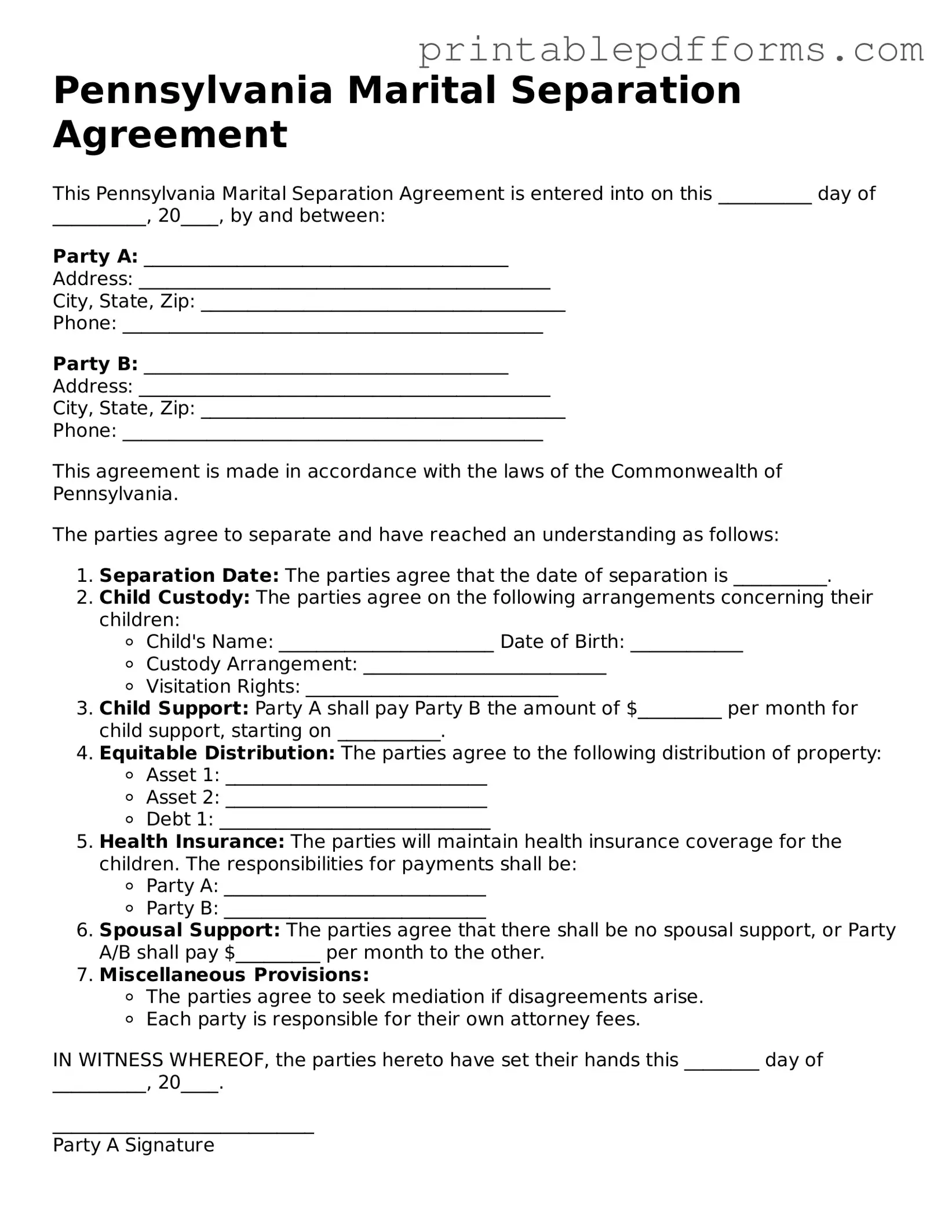Pennsylvania Marital Separation Agreement
This Pennsylvania Marital Separation Agreement is entered into on this __________ day of __________, 20____, by and between:
Party A: _______________________________________
Address: ____________________________________________
City, State, Zip: _______________________________________
Phone: _____________________________________________
Party B: _______________________________________
Address: ____________________________________________
City, State, Zip: _______________________________________
Phone: _____________________________________________
This agreement is made in accordance with the laws of the Commonwealth of Pennsylvania.
The parties agree to separate and have reached an understanding as follows:
-
Separation Date: The parties agree that the date of separation is __________.
-
Child Custody: The parties agree on the following arrangements concerning their children:
- Child's Name: _______________________ Date of Birth: ____________
- Custody Arrangement: __________________________
- Visitation Rights: ___________________________
-
Child Support: Party A shall pay Party B the amount of $_________ per month for child support, starting on ___________.
-
Equitable Distribution: The parties agree to the following distribution of property:
- Asset 1: ____________________________
- Asset 2: ____________________________
- Debt 1: _____________________________
-
Health Insurance: The parties will maintain health insurance coverage for the children. The responsibilities for payments shall be:
- Party A: ____________________________
- Party B: ____________________________
-
Spousal Support: The parties agree that there shall be no spousal support, or Party A/B shall pay $_________ per month to the other.
-
Miscellaneous Provisions:
- The parties agree to seek mediation if disagreements arise.
- Each party is responsible for their own attorney fees.
IN WITNESS WHEREOF, the parties hereto have set their hands this ________ day of __________, 20____.
____________________________
Party A Signature
____________________________
Party B Signature
Witnessed by:
____________________________
Witness Signature
